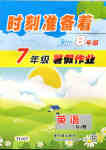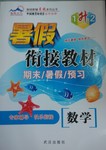
D
Social rules or laws on marriage vary widely between countries.Some countries, still do not have a legal minimum age for marriage, which makes child macriages are very common, there.
In the Western Christian countries, a 13 -year -old is still considered a child.Even getting married in one* s late teens is not usually encouraged because married life is likely to interfere with a young woman' s education and consequently restrict opportunities in later life.And there are also physical dangers in giving birth so young.
In Muslim countries such as Saudi Arabia, Iran and Pakistan, the age of puberty(青春期)at around 13 or 14 is the legal age for marriage, but in Turkey it is 15, and in Egypt and Tunisia, 18 the same minimum age as in many Western countries.It is argued that by allowing, earlier marriages, Islamic law is promoting stable relationships, while Western laws are encouraging promiscuity among young people.
In many countries, the trends of urbanization and education for girls have seen a drop in the number of child brides.However, early marriages continue to occur in poor rural areas.In India, for example, the legal age of marriage for a girl is 18 and to a boy, 21.Yet, according to government statistics, 18 percent of ten to fourteen-year old girls in the poor, rural state of Rajasthan in the northwest of the country are married.It is clear, then, that child marriages are connected with poverty, lack of education, rural customs as well as religion.So there don't tend to be any child marriages in urban or rich areas.
57.The underlined word "promiscuity" in the third paragraph means ____.
A.permanent partnership B.firm partnership
C.diverse relationship D.single relationship
58.According to the text, which of these women are married lastest?
A.Women from less educated background.
B.Women from poor rural areas.
C.Women from Islamic countries.
D.Wonferi from cities.
59.Child marriages are NOT related to ____ according to the passage.
A.social communication B.rural customs
C.poverty and lack of education D.religious beliefs
60.According to the passage, getting married early leads to all of the following EXCEPT____.
A.reducing a young woman's education
B.limiting a young woman's chances
C.causing baby death
D.doing harm to a young woman's health
 时刻准备着暑假作业原子能出版社系列答案
时刻准备着暑假作业原子能出版社系列答案 暑假衔接教材期末暑假预习武汉出版社系列答案
暑假衔接教材期末暑假预习武汉出版社系列答案 假期作业暑假成长乐园新疆青少年出版社系列答案
假期作业暑假成长乐园新疆青少年出版社系列答案科目:高中英语 来源:江苏省南京市白下区2011届高三二模英语试题 题型:053
请认真阅读下列短文,并根据所读内容在文章后表格中的空格里填入最恰当的单词。
注意:每空格1个单词。
D.R.Gaul Middle School is in Union, Maine, a blueberry-farming town where the summer fair finds kids competing in pig scrambles and pie-eating contests.
Gaul, with about 170 seventh-and eighth-graders, has its own history of lower level academic achievement.One likely reason:Education beyond the basic requirements hasn't always been a top priority for families who've worked the same land for generations.Here, few adults have college degrees, and outsiders(teachers included)are often kept at a respectful distance.
Since 2002, Gaul's students have been divided into four classes, each of them taught almost every subject by two teachers.The goal:To find common threads across disciplines to help students create a big picture that gives fresh meaning and context to their classwork-and sparks motivation for learning.
Working within state guidelines, each team makes its individual schedules and lesson plans, incorporating non-textbook literature, hands-on lab work and field trips.If students are covering the Civil War in social studies, they're reading The Red Badge of Courage or some other period literature in English class.In science, they study the viruses and bacteria that caused many deaths in the war.
Team teaching isn't unusual.About 77 percent of middle schools now employ some form of it, says John Lounsbury, consulting editor for the National Middle School Association.But most schools use four-or five-person teams, which Gaul tried before considering two-person teams more effective.Gaul supports the team concept by“looping”classes(跟班)so that the same two teachers stick with the same teens through seventh and eighth grades.Combining teams and looping creates an extremely strong bond between teacher and student.It also, says teacher Beth Ahlholm,“allows us to build an excellent relationship with parents.”
Ahlholm and teammate Madelon Kelly are fully aware how many glazed looks they see in the classroom, but they know 72 percent of their eighth-graders met Maine's reading standard last year-double the statewide average.Only 31 percent met the math standard, still better than the state average(21 percent).Their students also beat the state average in writing and science.And in2006, Gaul was one of 47 schools in the state to see testing gains of at least 20 percent in four of the previous five years, coinciding roughly with team teaching's arrival.

查看答案和解析>>
科目:高中英语 来源:湖南省长郡中学2012届高三第五次月考英语试题 题型:053
Directions:Read the following passage.Fill in the numbered blanks by using the information from the passage.
Write NO MORE THAN THREE WORDS for each answer.
D.R.Gaul Middle School is in Union, Maine, a blueberry-farming town where the summer fair finds kids competing in pig scrambles and pie-eating contests.
Gaul, with about 170 seventh- and eighth-graders, has its own history of lower level academic achievement.One likely reason:Education beyond the basic requirements hasn't always been a top priority for families who've worked the same land for generations.Here, few adults have college degrees, and outsiders(teachers included)are often kept at a respectful distance.
Since 2002, Gaul's students have been divided into four classes, each of them taught almost every subject by two teachers.The goal:To find common threads across disciplines to help students create a big picture that gives fresh meaning and context to their classwork -- and sparks motivation for learning.
Working within state guidelines, each team makes its individual schedules and lesson plans, incorporating non-textbook literature, hands-on lab work and field trips.If students are covering the Civil War in social studies, they're reading The Red Badge of Courage or some other period literature in English class.In science, they study the viruses and bacteria that caused many deaths in the war.
Team teaching isn't unusual.About 77 percent of middle schools now employ some form of it, says John Lounsbury, consulting editor for the National Middle School Association.But most schools use four- or five-person teams, which Gaul tried before considering two-person teams more effective.Gaul supports the team concept by "looping" classes(跟班)so that the same two teachers stick with the same teens through seventh and eighth grades.Combining teams and looping creates an extremely strong bond between teacher and student.It also, says teacher Beth Ahlholm, "allows us to build an excellent relationship with parents."
Ahlholm and teammate Madelon Kelly are fully aware how many glazed looks they see in the classroom, but they know 72 percent of their eighth-graders met Maine's reading standard last year -- double the statewide average.Only 31 percent met the math standard, still better than the state average(21 percent).Their students also beat the state average in writing and science.And in2006, Gaul was one of 47 schools in the state to see testing gains of at least 20 percent in four of the previous five years, coinciding roughly with team teaching's arrival.

查看答案和解析>>
科目:高中英语 来源: 题型:阅读理解
New comers to the
16. A. happy | B. afraid | C. glad | D. surprised |
17. A. some time | B. sometime | C. sometimes | D. sometimes |
18. A. other | B. the other | C. another | D. all |
19. A. opinion | B. idea | C. promise | D. conclusion |
20. A. need | B. needed | C. dare | D. dared |
21. A. of | B. against | C. for | D. with |
22. A. place | B. space | C. room | D. area |
23. A. From school | B. Out school | C. By school | D. In school |
24. A. lessons | B. knowledge | C. subjects | D. objects |
25. A. when to | B. how to | C. what to | D. where to |
26. A. ability | B. skill | C. abilities | D. skills |
27. A. think | B. want | C. let | D. make |
28. A. with | B. across | C. over | D. above |
29. A. something | B. anything | C. nothing | D. much |
30. A. that | B. which | C. 不填 | D. what |
31. A. important | B. unimportant | C. necessary | D. useless |
32. A. study | B. work | C. learning | D. aim |
33. A. growing | B. growth | C. future | D. tomorrow |
34. A. ability | B. possibility | C. interest | D. chance |
35. A. develops | B. learns | C. goes | D. works |
查看答案和解析>>
科目:高中英语 来源:天津市新华中学2010届高三第八次统练(英语) 题型:阅读理解
Indians are the world’s biggest bookworms, reading on average 10.7 hours a week, twice as long as Americans, according to a new survey.
The NOP World Culture Score Index surveyed 30,000 people in 30 countries from December 2004 to February 2005.
Analysts said self-help and desirable reading could explain India’s high figures.
Time spent on reading meant fewer hours watching TV and listening to the radio—India came fourth last in both.
The NOP survey of 30,000 consumers aged over 13 saw China and the Philippines take second and third place respectively in average hours a week spent reading books, newspapers and magazines.
Britons and Americans scored about half the Indians’ hours and Japanese and Koreans were even lower—at 4.1 and 3.1 hours respectively.
R. Sriram, chief executive officer of Crosswords Bookstores, a chain of 26 bookshops around India, says Indians are extremely entrepreneurial (有开创精神的) and reading “is a fundamental part of their being”.
“They place a great deal of emphasis on reading. That’s the reason why they do well in education at home and in universities abroad,” he said.
“People educate themselves and deal with change throughout their lives. And the way to do that is to update themselves with books.”
Mr. Sriram says social changes have also made a difference: “Earlier people could turn to their parents and grandparents for advice.Now they turn to books.”
1. According to the time spent on reading, which of the following answers is right?
A. Indians>Americans>Chinese>Koreans
B. Americans>Chinese>Philippines>Japanese
C. Chinese>Indians>Americans>Philippines
D. Indians>Chinese>Philippines>Americans
2. The sentence “India came fourth last in both.” in paragraph four means_____.
A. Indians have no time to watch TV and listen to the radio
B. Indians are busy with their work every day
C. Indians spent more time on reading so that they have fewer hours watching TV and listening to the radio
D. People in other countries spent more time watching TV and listening to the radio
3. The time that Chinese spent on reading may be______ a week.
A. 5.35 hours B. less than 10.7 hours but more than 5.35 hours
C. more than 10.7 hours D. 10.7 hours
4. The Indians do well in education and universities abroad because_____.
A. they have excellent teachers in every school
B. they have qualities that are needed to succeed
C. they put much emphasis on reading
D. they live in a developed country
5. Which of the following is not mentioned in this passage?
A. Indians live a very rich life in their homeland.
B. Indians are those who spend much time on reading or studying.
C. Indians are those who spend fewer hours watching TV and listening to the radio.
D. Now the Indians turn to books for advice.
查看答案和解析>>
科目:高中英语 来源:2010-2011学年江苏省高三下学期期中考试英语题 题型:其他题
任务型阅读(共10题;每小题1分,满分10分)
请认真阅读下列短文,并根据所读内容在文章后表格中的空格里填入最恰当的单词。
注意:每空格1个单词。
D. R. Gaul Middle School is in Union, Maine, a blueberry-farming town where the summer fair finds kids competing in pig scrambles and pie-eating contests.
Gaul, with about 170 seventh- and eighth-graders, has its own history of lower level academic achievement. One likely reason: Education beyond the basic requirements hasn't always been a top priority for families who've worked the same land for generations. Here, few adults have college degrees, and outsiders (teachers included) are often kept at a respectful distance.
Since 2002, Gaul's students have been divided into four classes, each of them taught almost every subject by two teachers. The goal: To find common threads across disciplines to help students create a big picture that gives fresh meaning and context to their classwork -- and sparks motivation for learning.
Working within state guidelines, each team makes its individual schedules and lesson plans, incorporating non-textbook literature, hands-on lab work and field trips. If students are covering the Civil War in social studies, they're reading The Red Badge of Courage or some other period literature in English class. In science, they study the viruses and bacteria that caused many deaths in the war.
Team teaching isn't unusual. About 77 percent of middle schools now employ some form of it, says John Lounsbury, consulting editor for the National Middle School Association. But most schools use four- or five-person teams, which Gaul tried before considering two-person teams more effective. Gaul supports the team concept by "looping" classes (跟班) so that the same two teachers stick with the same teens through seventh and eighth grades. Combining teams and looping creates an extremely strong bond between teacher and student. It also, says teacher Beth Ahlholm, "allows us to build an excellent relationship with parents."
Ahlholm and teammate Madelon Kelly are fully aware how many glazed looks they see in the classroom, but they know 72 percent of their eighth-graders met Maine's reading standard last year -- double the statewide average. Only 31 percent met the math standard, still better than the state average (21 percent). Their students also beat the state average in writing and science. And in2006, Gaul was one of 47 schools in the state to see testing gains of at least 20 percent in four of the previous five years, coinciding roughly with team teaching's arrival.

查看答案和解析>>
湖北省互联网违法和不良信息举报平台 | 网上有害信息举报专区 | 电信诈骗举报专区 | 涉历史虚无主义有害信息举报专区 | 涉企侵权举报专区
违法和不良信息举报电话:027-86699610 举报邮箱:58377363@163.com